I know, Morgan didn’t build a boat tail style speedster in 1953, but that didn’t stop someone from trying to convert this +4 into one. The seller, Chip S, believes the conversion could have been started as early as 1955. Chip found it parked in a barn a while back, which it had been parked in for the better part of 30 years. It’s currently parked in his garage in Portland, Oregon and it needs to go. He’s asking $8,500 or best offer, so if you are interested in reviving this customized Morgan, be sure to use the form below to message him!
This is a rather unusual car to build into a boat tail, but for the most part it looks pretty good. According to what Chip was able to find out, the story is that it was rear ended shortly after being purchased in the early ’50s. Rather than having it repaired to original condition, the owner decided to go a more custom route. While there is some surface rust showing where the paint has been removed, there isn’t any serious rust at this point. The custom body work appears to have been very well done, but after sitting for so long, it’s going to need some work.
It’s also going to need mechanical work from sitting. The engine is the original and numbers matching, but currently isn’t in the car. Morgan didn’t build their own engines and instead sourced them from various manufactures. The engine of choice by the time this 4 was built was the 2088 cc Standard-Triumph 4 cylinder. It’s essentially the same wet liner engine found in the Triumph TR2 and TR3. And while 68 horsepower might not seem like a lot of power, it’s plenty for such a lightweight.
Once you get the body fixed back up and the engine reinstalled, you’re going to have to source most of the interior. Since it’s already custom, I would think about installed more modern seats, steering wheel and safety equipment. Since Morgan sourced many parts from Triumph, it really shouldn’t be too difficult to find everything you will need to restore it. The big question for the next owner, will be on what to do with it. Do you keep the boat tail rear or do you return it to factory original condition? I’ll leave that debate up to you!
Our thanks to Chip for listing this incredibly cool Morgan with us! I truly wish we could make it ours. If any of you have a classic that you are thinking about selling, please consider listing it here as an Exclusive. There’s no risk and as long as your car is priced right, it should sell quickly.

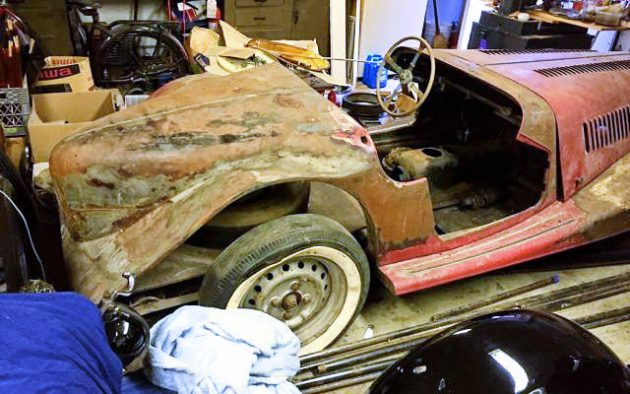
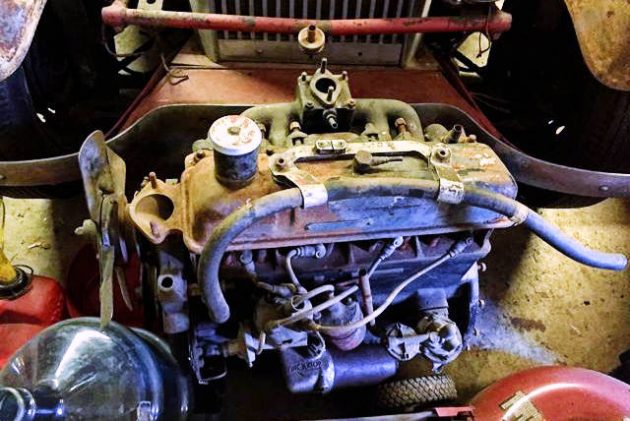
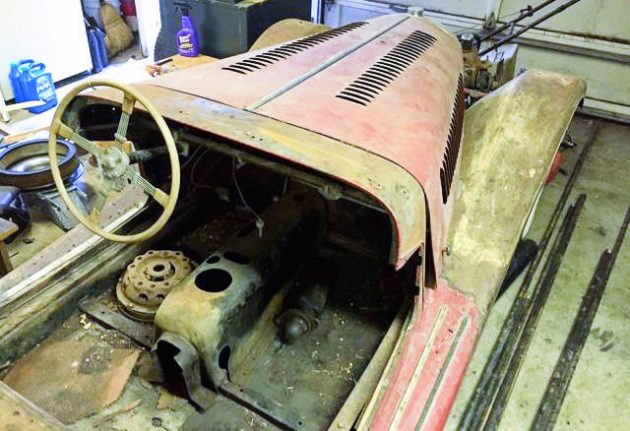
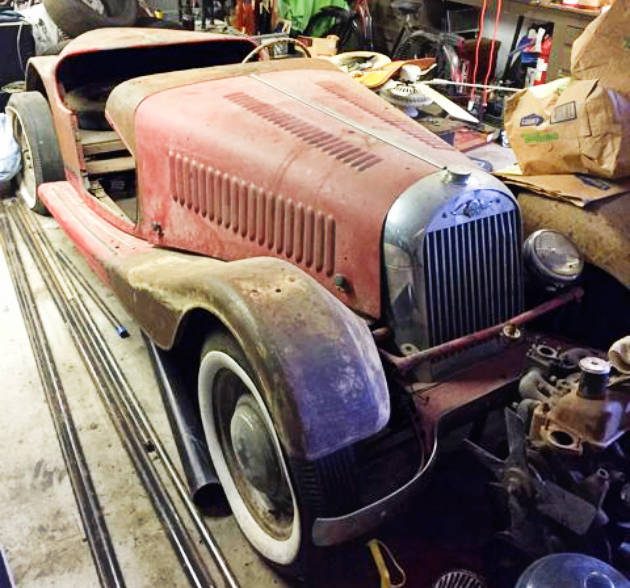
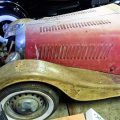
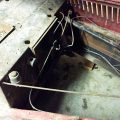

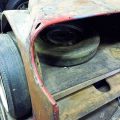
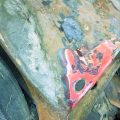
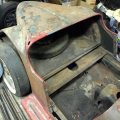

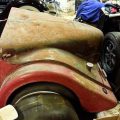
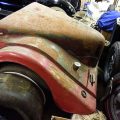
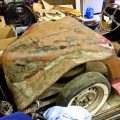




Possibly the hood from another car used to make that boat tail?
Now that you mention it, Shane, that’s exactly what it looks like! The photos showing the LH side suggest that the new piece was laid over what was left of the old….
As this is a flat-rad car, it would most likely be worthwhile to scrap the added tail pieces and restore the car to original shape. At one time, the Morgan “works” would make new body parts, though I don’t know if that’s part of their current services. In any event, it shouldn’t be beyond the scope of a decent panel beater.
All I know is that if I were taking it on, I’d go back to original. That would include the interior, Josh, and most likely would require new wood body framing, etc., etc. All in all, a pricey project that — not having followed Morgan values over the years — I can’t say would be worthwhile from a strictly investment/return point of view. But, as always, that doesn’t matter much to me. It’s worth doing because it’s worth keeping!
Since the up-and-down arrows aren’t currently available, it seems safe for me to say that I would consider it heresy to do a Kustom Kar treatment of a Mog!
Body tubs can be had via Steve Barnes at Vintage Sheetmetal in Colwall about three miles from the Morgan factory. See. http://www.morganspecialist.com/VSM_2011/Welcome.html
Evidently a Morgan +4 flat rad not a 4/4.
The Boat Tail was formed from the hood of a 1946 Hudson, as the story goes. This is from the guys who first saw the car in 1955 or 56 at Willamette University, and this car got them into Morgans.
I thought it kind of looked like a Hudson hood! Thanks for chiming in Chip. What a cool machine and thanks again for listing it!
Chip the work that was done as far as I can tell looks pretty good. As in a lot of cases the car is better than it appears in the pic’s, I also noticed that the metal work is almost done so my love of boat tail cars tells me that the best course of action would be to finish it. I think that with the right guy doing the work you could end up with a very cool looking car. I also think that the custom route would be a the Cheeper route to go.
I have a 1953 +4 and the questions on originality and the year is easily verified.
The factory will provide the build documentation for a 75£ fee.
To be original, the 3 digit number on the bonnet should match the last 3 numbers of the engine serial, as the seller has correctly stated. The transmission number is not necessarily the same as the bonnet number. The chassis number is located on the right side floor support between the sill and the transmission support. It will begin with P followed by a 4 digit number likely starting with 25xx or 26xx for 1953.
My 53 is currently undergoing a frame up restoration including all new wood. Although an original California Morgan the wood finally required replacement. A local talented cabinet maker built the new tub using the original as a reference. The attached photo is prior to restoration.
I’ve got a 1953 Morgan +4 Flat Rad, similar to this but not dicked up. The factory can build you a new rear birdcage (wood structure) to put this back to stock. Heck, the factory can build you a whole new rear section of the car if you don’t want to do it yourself.
Good to know Wilhelm! I just wonder how much it will set you back to get the rear section?
I think this car will need more research. From what I know, the original 4/4 was made from the ’30s to 1950. Then there was a break, and the 4/4 Series II was made from 1955 to 1960.
So this might not be a 1953 4/4. And then in 1955 the 4/4 had a Ford side valve (flathead) engine of about 1100 cc. The 4/4 had small engines, not the 2.1 liter TR engine, which went into the +4. The engine in this car does not look like a 2.1 liter TR engine. It’s likely a transplant.
But the radiator shroud looks like a Series 1, which would make it earlier than 1953. But I’m not a Morgan expert, so someone can correct all this if it’s wrong.
With a decades-old import car like this that has been banged up and modified it’s not surprising that it might have been modified in places in addition to the rear clip.
This is the original engine, not a transplant. The engine number matches the number stamped in the bonnet hinge as per all early Morgans.
I might have messed up on the name Dolphin. I wasn’t sure if it was a 4/4 or a +4. From what I found, there were a small handful of ’53s to receive the flat rad and the bigger engine.
Any Morgan experts out there that can weight in?
Josh, I believe you are right, Morgan made the Plus 4 in 1953, and it had a flat radiator. Here is one that was sold by a certain outfit in Queens, NY that’s well known on BF, and there are lots of good photos:
http://www.gullwingmotorcars.com/1953-morgan-plus-4-c-1870.htm
The New York Plus 4 appears to have the same engine as the one that Chip is selling, and from what he said I do not doubt to be the original engine. So all of that and the fact that Morgan did not make any 4/4 cars in 1953 makes this car a 1953 Plus 4 with the original engine.
Trying to put a year model to an early brit is chancy. These cars evolved and changes were made as they were developed and not to any kind of annual schedule. In a lot of cases the cars were assigned a year model by the local DMV after they were imported and when they were sold. If the car sat at a dealership for a period of time it could well have been assigned a year model well after it was actually produced.
Unquestionably, the only this may be worth 8500 is to buy a new body section.
The new body on the +4 we have at the shop cost $6500, but is the light weight competition one in aluminum . . It came from Morgan-Spares in NewYork State, and is beautiful workmanship and woodworking. In steel, they are cheaper ( and heavy )
Working with the boat tail will only save the cost of a new body…….and doing so will heavily reflect on a heavily reduced resale desirability and value.
If the engine shown is from that car, it is a +4, not a 4/4. The +4 used a Standard Vanguard engine first, then the TR2-3-4 engine. The rare flat rad cars are worth more when properly restored than the TR-engined cars with the rounded cowl front. Almost 80% of the Morgan production came to North America during the late fifties and sixties, so the later cars are not as rare as the flat rads. Parts are available from several sources. Driving a Morgan is a unique experience…enormous amount of fun.
I wonder where it was planned to fit the spare tyre? If it was going to be laid flat on the top of the boat tail all the nice body lines would be lost.
Looks like the spare fits inside the boat tail.
If the wood is shot, the factory will build that too!
Morgan quit making the 4, because they couldn’t find a replacement engine when their supplier quit making them. So they switched to +8, meaning 8 cylinder.
I love the car and would restore it to original. I bought a backhoe and an airplane this week……..maby next week………..
If any of you Barn Finds viewers are planning a visit to England, Please consider contacting Morgan Motor Company in advance to schedule a tour thru the factory. It’s a fascinating tour that is a blend of early 20th century car factory, along with cutting edge car building. 500 cars a year, 10 cars a week [2 weeks each summer the factory closes for employee holiday [vacation].
And if the spouse is going to be with you, remind them the factory is in the region of the Cotswolds, some of the most beautiful scenery in the world, especially Bourton-on-the-water. Unfortunately, a number of years ago one of the oddest and quirky auto museums in the world, located at B-o-t-w, was the Cotswold motor museum. There was literally not a square inch of display area [walls, floor, hanging space from the ceiling] that was not filled with cars, bikes, automobilia and “interesting oddball stuff”.
I used to attend the big Beaulieu Autojumble in the south of England every September. One of my stops ahead of the event was a visit to the Morgan factory, and I often ended up having lunch with Sir Charles Morgan, he’s now the 3rd generation to run the company.
Wow! The third generation thing is impressive considering that the company began building cars in 1911. Must be something in the water…